Euphorbia tithymaloides
Euphorbia tithymaloides
L., Sp. Pl. 1: 453. 1753; Pedilanthus tithymaloides (L.) Poiteau, Ann. Mus. Natl. Hist. Nat. 19: 390, t19. 1812; Bingtao & Gilbert, Fl. China @ eFloras.org 11: 314; Hook. f., Fl. Brit. Ind. 5: 239. 1890; keralapants.in; Tithymalus tithymaloides (L.) Croiz., Amer. J. Bot. 24: 704. 1937.
Erect subshrubs, up to 1.5 m tall. Stem stout, slightly fleshy, strongly flexuous; branchlets zigzag, pubescent when young; latex milky. Leaves alternate, distichous, deciduous, subsessile, petiole 2-8 mm long, flat; leaf blade ovate, long-ovate, broadly-ovate or elliptic- ovate, 3.5-9 cm x 2.5-7.2 cm, fleshy, both surfaces pubescent or glabrescent, base rounded, obtuse, cuneate or truncate, apex shortly acuminate, margin entire and wavy, midrib elevated abaxially, lateral veins 7-9 pairs; stipules minute with a rounded gland. Inflorescence a strongly zygomorphic cyathium in dichasial cymes or cincinni clustered on leafless terminal or axillary at upper part, each one with many male flowers and one female flower. Cyathia bracteate, pedunculate, peduncle 3-8 mm long, bilaterally symmetrical, scentless, nectar glands 4, 7-15 mm long. Involucre obliquely boat- or shoe-shaped, stalked, deep red, green below, equilateral +/- 1 cm long, consisting of 2 bracts (or lobes): lower or abaxial bract 1+ cm long, ovate, folded longitudinally above into boat-shaped structure, apex 2-fid, margin white ciliate; adaxial bract heel-shaped, near half in length to abaxial bract, apex bipartite or truncate, white ciliate. Male Flowers: Many, up to 25, each reduced to 1 stamen. Pedicels slender, articulated, up to 1 cm or more long, pubescent, white or pinkish, filaments red, much shorter than pedicels, glabrous or sparsely pubescent, red; anthers globose, bithecous, longitudinal dehiscent, red, dark purple when mature. Female Flowers: Solitary, inserted at centre of involucre; pedicel stouter and slightly smaller than that of male flowers, pubescent. Ovary fusiform, 3-locular, with one ovule per loculus; styles 3, usually connate, exserted from involucres.
Fruit not observed.
Common Names: Devil’s Backbone, Zigzag plant, Jacob’s Ladder, Japanese Poinsettia, Slipper Spurge, Redbirds Cactus, Christmas Candle, Redbird Flower, Jewbush, Buck- thorn, Cimora Misha, Fiddle flower, Ipecacualana, Milk hedge, Myrtle- leaved Spurge, Red Slipper Spurge, Slipper Flower, Slipper plant, Timor’s Misha
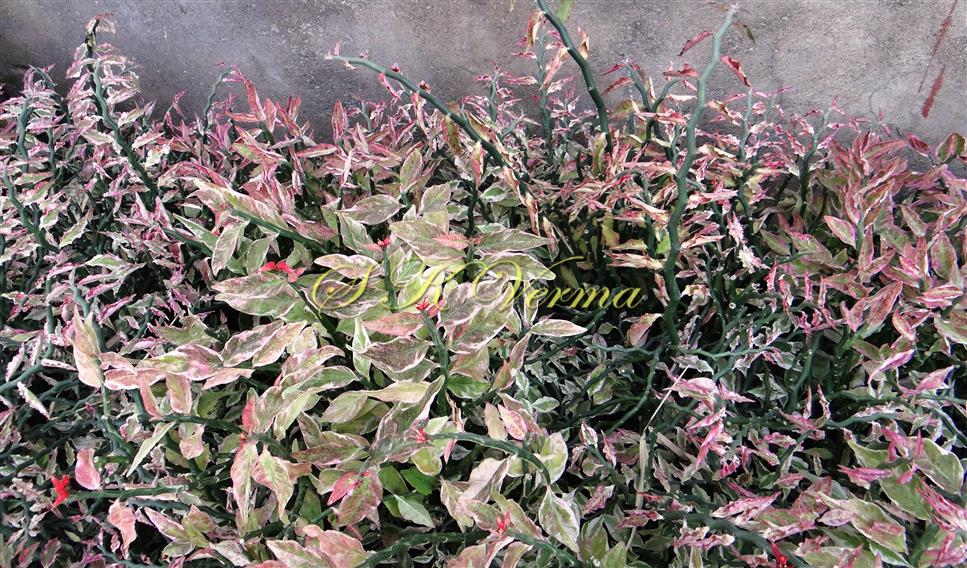
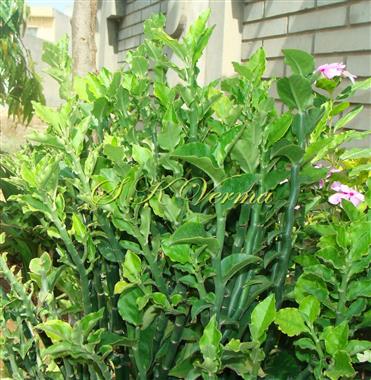
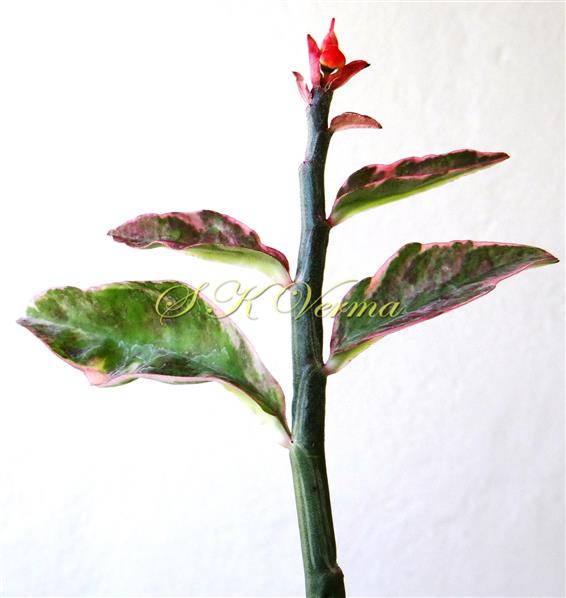
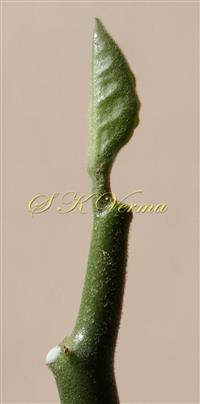
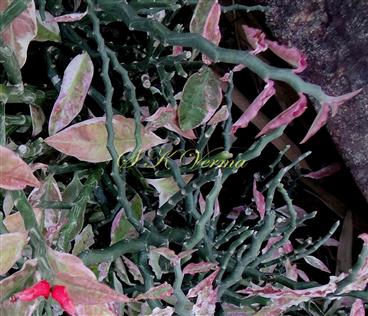

-DSC08280.jpg)
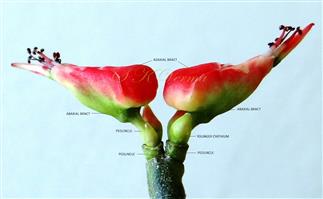
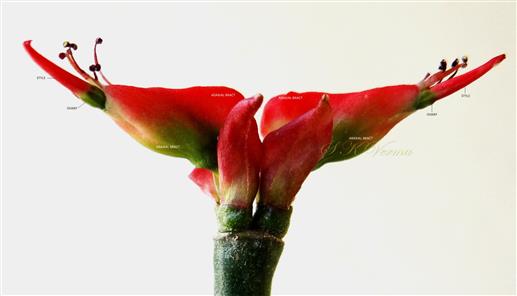
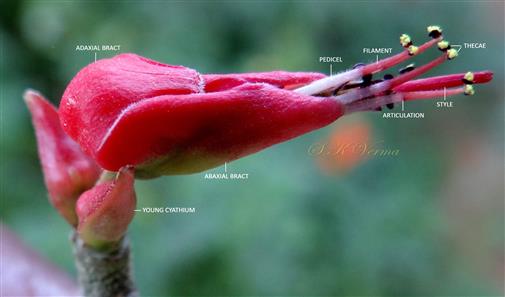
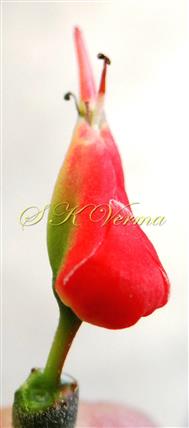

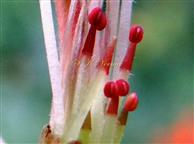







-DSC08280.jpg)





